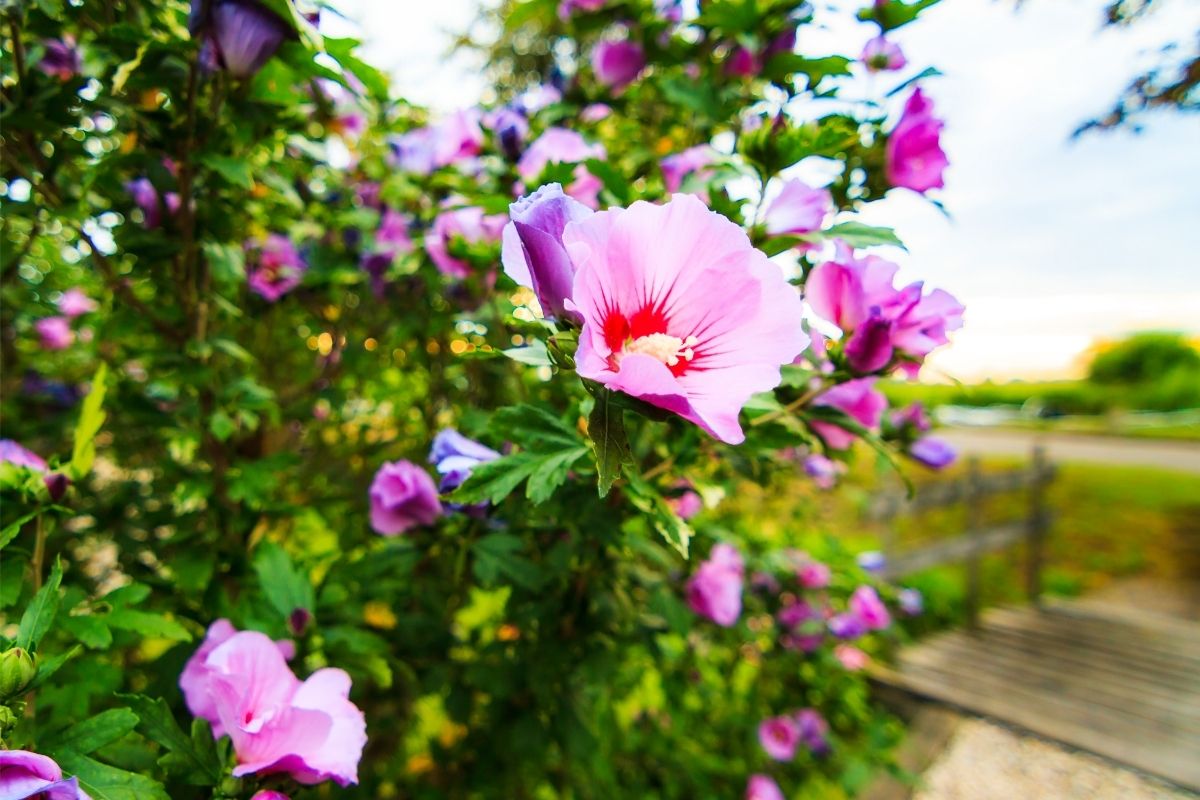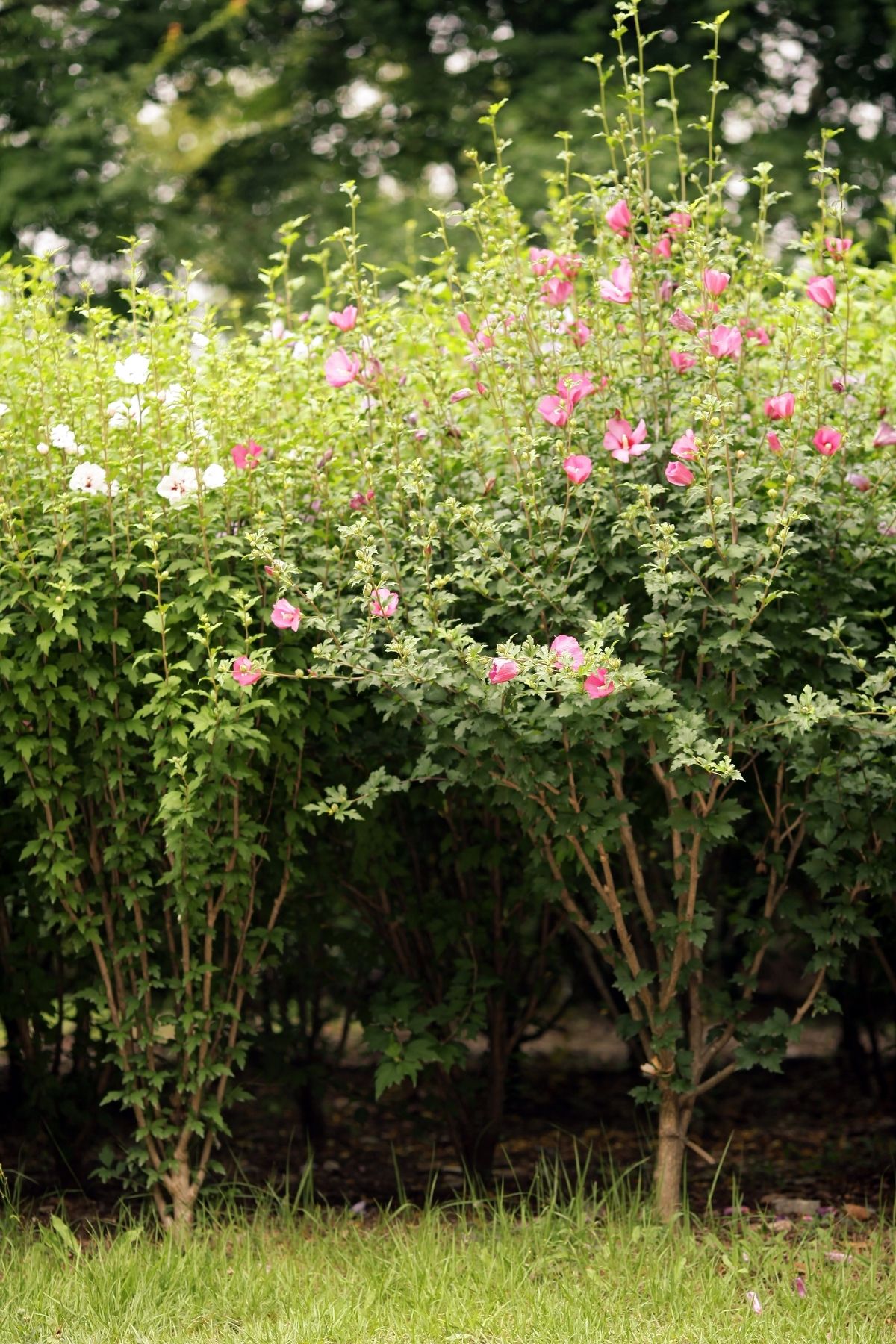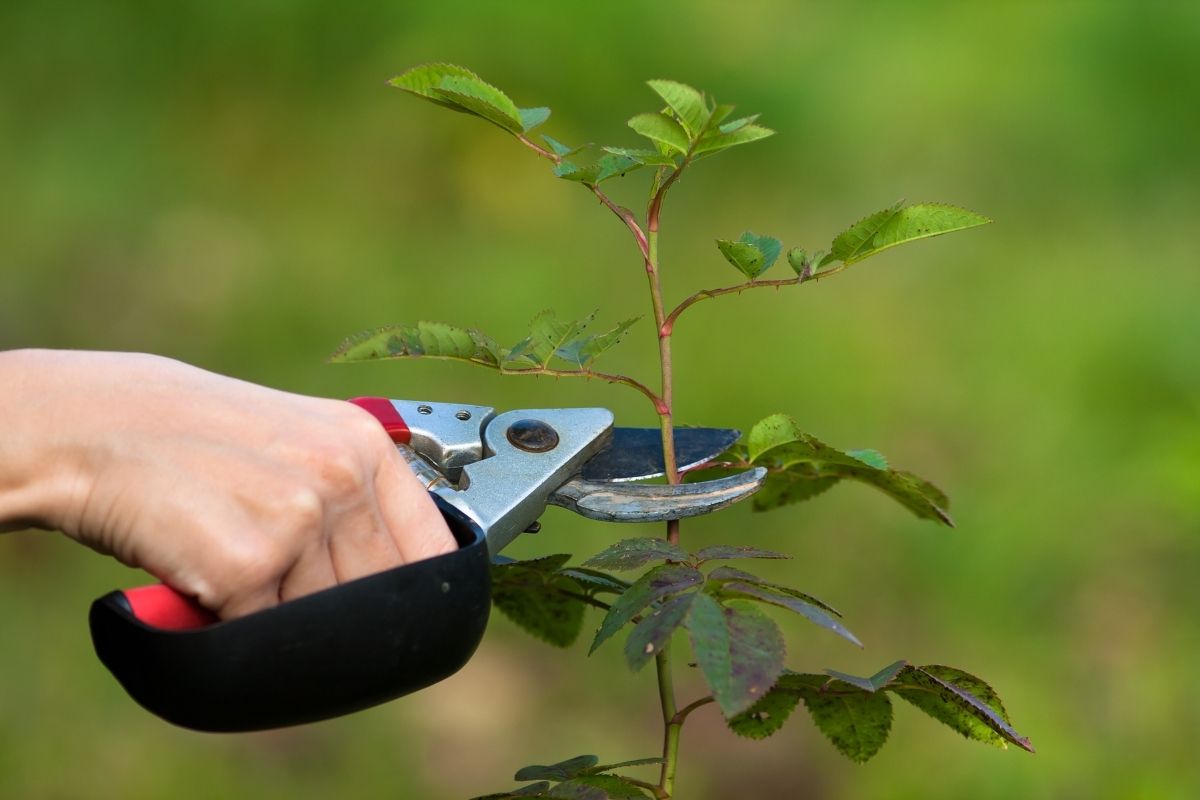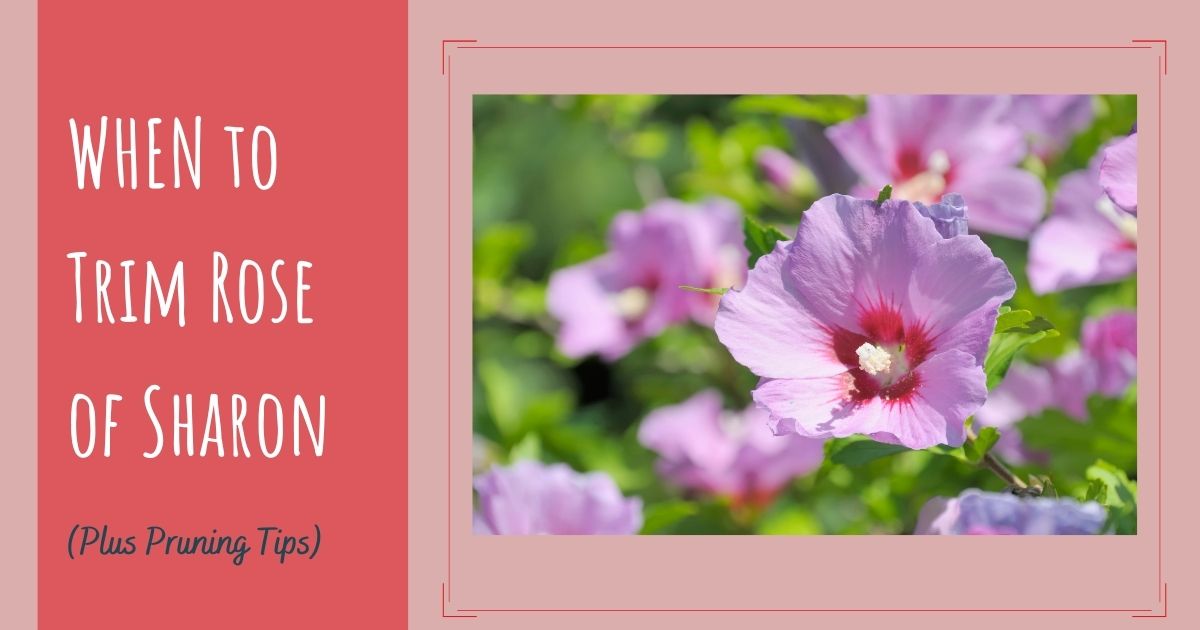What is Rose of Sharon?
What is Rose of Sharon? How will you know when to trim Rose of Sharon? In short, it’s a flowering shrub that typically grows three to five feet tall (0.9 -1.5 meters) with a spread of two to four feet (0.6-1.2 meters). It produces clusters of fragrant blooms from midsummer to fall, and you can use it in landscape designs.
Some folks also refer to it as Althea or Hibiscus syriacus. But there’s more to this plant than just its name and appearance. Let’s look at the Rose of Sharon and what makes it such a popular choice for home gardens.

What Does Rose of Sharon Look Like?
The Rose of Sharon is a lovely flowering plant that comes from Asia. It belongs to the mallow family and is also known as the Hibiscus syriacus. Large, beautiful flowers in white, pink, or crimson characterize the Rose of Sharon.
They bloom from late summer to early fall and are usually on long stems. The Rose of Sharon is a deciduous plant, which means its leaves fall off in the winter. The Rose of Sharon is a common landscape plant that you can use as a hedge, a specimen plant, or mass planting.
It’s simple to cultivate and maintain and tolerates a wide range of soils and circumstances. On the other hand, the Rose of Sharon needs regular irrigation to thrive. The Rose of Sharon is a terrific option to consider if you’re searching for a plant that will bring beauty and intrigue to your yard.
When to Trim Rose of Sharon
There are a few different times when you might want to trim your Rose of Sharon. If you encourage more blooming, you can trim the plant after it flowers in the summer. You can also trim it back in the fall to help it overwinter. And finally, you can do some light pruning in the spring if needed. Let’s take a closer look at each of these situations:
If You Want More Flowers
Trim your Rose of Sharon after it flowers in the summer. Cut back any dead or diseased branches first, then cut back the rest of the plant by about one-third. This will encourage new growth and more blooming next season.
If You Want to Overwinter Your Plant
Trim your Rose of Sharon in the fall before the first frost. Cut back any dead or diseased branches first, then cut back the rest of the plant by about one-half. This will help it overwinter and come back strong next season.
If You Need to Do Some Light Pruning
You can do this in the spring if there is a need. Remove any dead or diseased branches, and trim back any overly long or straggly branches. That’s all there is to it! So now you know when to trim your Rose of Sharon. Just remember always to cut back dead or diseased branches first, and then you can trim the rest of the plant as needed. Happy gardening!
How to Prune Rose of Sharon
The Rose of Sharon is a lovely flowering shrub that displays its blossoms at the end of summer. Pruning Rose of Sharon is not a requirement. However, doing so can increase flower production and improve a plant’s overall condition. If you decide to prune your Rose of Sharon, the ideal time is early spring, just before the plant produces new growth.
When you are ready to trim your Rose of Sharon, remove any branches that have diseases or are dead. After that, cut back any branches that are too long or are growing in an undesirable direction, bringing them to the ideal size or shape.
Finally, prune some of the older branches closer to the plant’s base to thin out the plant. This will assist in promoting new growth and the production of additional flowers. The Rose of Sharon is an easy plant to prune, and doing so can help maintain the plant’s health and promote the growth of other flowers.
If you follow these guidelines, you will have a magnificent shrub to admire during the entire summer.

How to Care for Rose of Sharon
Suppose you are fortunate enough to have a Rose of Sharon (Hibiscus syriacus) in your yard. In that case, you know the many benefits this shrub can provide. You only need to take good care of Rose of Sharon. At a time of year when very few other plants are in bloom, its magnificent blossoms bloom from late summer into October.
In addition to this, it requires a manageable amount of maintenance after its formation. Continue reading to gain knowledge on how to maintain the health and happiness of your Rose of Sharon. The Rose of Sharon is a type of shrub known as a deciduous shrub, which means that it sheds its leaves each winter.
It can withstand cold temperatures in USDA zones five through nine. When looking for a location to plant your Rose of Sharon, you should search for a site that gets full sun (at least six hours of direct sunlight per day). Rose of Sharon can survive in dappled shade, but it won’t bloom as abundantly as it would otherwise.
In addition, the plant grows best in soil that drains well; if the soil in your garden is clay-based, you should amend it with compost or some other organic matter before planting the plant. Following selecting a location for planting and preparing the soil, it is time to put your Rose of Sharon into the ground.
When planting a young shrub, dig a hole twice as wide as the root ball before setting it. This will allow the roots to develop their full potential. After planting, give it a good soaking of water right away. Then, continue to water it once a week throughout its first growing season.
After the first year, you will be able to reduce the amount of water given to the plants because they will be more resistant to drought. On the other hand, if you live in an area that experiences prolonged drought, you might need to water your Rose of Sharon more frequently.
Since it blooms on new growth, the optimal time to prune Rose of Sharon is either in the late winter or the early spring before the plant begins to produce new growth. However, if it is essential, you can prune shrubs very harshly; they will swiftly recover by creating healthy, new growth.
You should regularly remove spent flowers during growing to stimulate more abundant flowering. (All you have to do to deadhead a plant is snip off the blossom stem where it attaches to the plant.)
Suppose you give it the attention it needs. In that case, your Rose of Sharon will remain an attractive and beneficial component of your landscape for many years to come.
How to Deadhead Rose of Sharon
Rose of Sharon will produce more blooms and be tidier if you remove the spent flowers as they appear. To the deadhead Rose of Sharon, you need to remove the flowers that have already flowered from the base of the stalk.
You have the option of deadheading Rose of Sharon after each bloom or waiting until all of the blossoms on a stem have withered away before doing so. Make sure to remove the spent flowers before the plant sets the seed.

Final Thought
Rose of Sharon bushes is beautiful additions to any landscape. With a little bit of care, they will continue to provide color and beauty for years. Trimming is an essential part of Rose of Sharon’s care and, if done correctly, can help keep your bushes healthy and looking their best.
We hope you find these Rose of Sharon pruning tips helpful and that you will take good care of your Rose of Sharon bushes this season!
